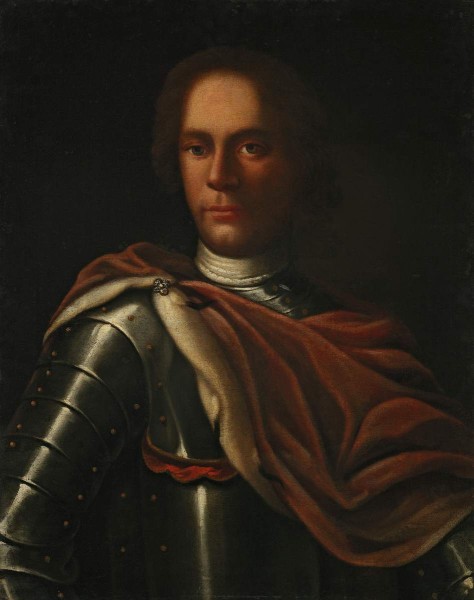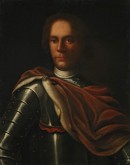Portrait of Artemy Volynsky
1730s. 1739(?)
- oil on canvas. 77,5 х 61
Received in 1925 from the State Museum Fund Provenance: Vorontsovka Estate, Tambov Gubernia- State Tretyakov Gallery
Artemy Volynsky (1689–1740) Member of the noble Volynsky family; descendent from Prince Bobrok-Volynsky, military governor. In 1704 Artemy was enrolled as a soldier in a dragoon regiment. By 1711, he was already a Captain of Horse in favour with the tsar. He also acted in the capacity of ambassador. In 1718 he was promoted to Adjutant General. One year later, he was appointed governor of Astrakan Gubernia. In 1721 his full authority was taken away from him, and he would only deal with administrative affairs. In 1722 Volynsky tried to strengthen his position by marrying Alexandra Naryshkina (169?–1730), cousin of the Emperor and daughter of Boyar Lev Naryshkin. Catherine I appointed him governor of Kazan, but in 1730 he was dismissed from this position. In 1738 he became a cabinet minister of Empress Anna Ioannovna. He sought to limit the influence of foreigners at court. Volynsky wrote Notes on Politics. In 1740 he was falsely accused of treason by Ernst Johann von Biron and Andrey Osterman, arrested and executed.
There is information suggesting that in 1739 Gsell painted a portrait (from life) of Artemy Volynsky. The portrait remained in the family of his youngest daughter Maria, who became Countess Vorontsova after her marriage (1725–1792). At the age of 15, after her father’s execution, she was forced to take the veil in the Yeniseysk Nativity Convent. In 1742, she was returned to Moscow. She was buried at Voronovo, the Volynsky family estate.

